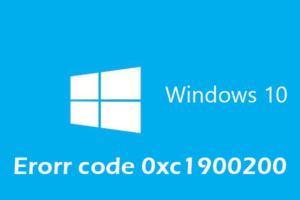-
Table of Contents
Effortlessly secure and access your Windows 11 with Passkeys: Simplify, Secure, and Manage.
Passkeys in Windows 11 are a convenient and secure way to access your device and manage your accounts. They serve as an alternative to traditional passwords and can be used across various Microsoft services. In this guide, we will explore how to use and manage Passkeys in Windows 11, ensuring a seamless and secure login experience.
Introduction to Passkeys in Windows 11
Windows 11 introduces a new feature called Passkeys, which aims to enhance security and simplify the authentication process for users. Passkeys are a type of passwordless authentication method that allows users to sign in to their devices without the need for traditional passwords. In this article, we will explore how to use and manage Passkeys in Windows 11, providing you with a comprehensive guide to this exciting new feature.
Passkeys in Windows 11 are based on the FIDO2 standard, which is an open authentication standard that enables passwordless authentication using public key cryptography. This means that Passkeys are more secure than traditional passwords, as they are not susceptible to common password-based attacks such as phishing or brute-force attacks.
To set up a Passkey in Windows 11, you need to have a Microsoft account and a compatible device with a TPM 2.0 chip. TPM stands for Trusted Platform Module, and it is a hardware component that provides secure storage for cryptographic keys and helps protect against tampering and unauthorized access.
Once you have ensured that your device meets the requirements, you can proceed to set up a Passkey. To do this, go to the Settings app and navigate to the Accounts section. From there, select the Sign-in options tab and click on the Add button under the Passkey section. Follow the on-screen instructions to create your Passkey, which can be a PIN, a fingerprint, or a facial recognition scan, depending on the capabilities of your device.
After setting up your Passkey, you can use it to sign in to your device instead of using a traditional password. Simply click on the Sign-in options on the login screen and choose the Passkey option. Enter your Passkey, and you will be granted access to your device.
Managing Passkeys in Windows 11 is also straightforward. If you ever need to change or remove your Passkey, you can do so by going to the Sign-in options in the Settings app. From there, select the Passkey option and click on the Change button to modify your Passkey or the Remove button to delete it.
It is worth noting that Passkeys in Windows 11 are tied to your specific device and cannot be used to sign in to other devices. This adds an extra layer of security, as even if someone gains access to your Passkey, they will not be able to use it on another device.
In conclusion, Passkeys in Windows 11 offer a secure and convenient way to authenticate yourself without the need for traditional passwords. By leveraging the FIDO2 standard and the TPM 2.0 chip, Passkeys provide enhanced security and protection against common password-based attacks. Setting up and managing Passkeys in Windows 11 is a straightforward process, and once you have created your Passkey, you can use it to sign in to your device with ease. So why not give Passkeys a try and experience the benefits of passwordless authentication in Windows 11?
Creating and Setting up Passkeys in Windows 11
Windows 11 introduces a new feature called Passkeys, which provides an additional layer of security for your device. Passkeys are a convenient and secure way to sign in to your Windows 11 device, and they can be used instead of traditional passwords. In this article, we will explore how to create and set up Passkeys in Windows 11, ensuring that your device remains protected.
To create a Passkey in Windows 11, you need to navigate to the Settings app. You can do this by clicking on the Start button and selecting the gear icon, or by pressing the Windows key + I on your keyboard. Once in the Settings app, click on the Accounts option, followed by the Sign-in options tab.
Under the Sign-in options tab, you will find the Passkey section. Click on the Add button to begin the Passkey setup process. Windows 11 will prompt you to enter your current password to verify your identity. This step ensures that only authorized users can create and manage Passkeys on the device.
After entering your password, you will be presented with the Passkey setup screen. Here, you have two options: using a PIN or a biometric gesture. A PIN is a numeric code that you can enter on the lock screen to sign in to your device. On the other hand, a biometric gesture utilizes Windows Hello, which allows you to sign in using facial recognition or a fingerprint scan.
To set up a PIN, click on the Set up button next to the PIN option. Windows 11 will prompt you to enter a numeric code of your choice. It is important to choose a PIN that is easy for you to remember but difficult for others to guess. Once you have entered your PIN, you will be asked to confirm it. After confirming, your Passkey will be created, and you can start using it to sign in to your device.
If you prefer to use a biometric gesture, such as facial recognition or a fingerprint scan, click on the Set up button next to the Windows Hello option. Windows 11 will guide you through the process of setting up your chosen biometric gesture. This typically involves capturing a scan of your face or fingerprint. Once the setup is complete, you can use your biometric gesture to sign in to your device.
Managing Passkeys in Windows 11 is straightforward. To change your Passkey, navigate to the Sign-in options tab in the Settings app and click on the Change button under the Passkey section. Windows 11 will prompt you to enter your current Passkey for verification purposes. After verification, you can enter a new Passkey of your choice.
If you ever forget your Passkey, don’t worry. Windows 11 provides a way to recover it. On the lock screen, click on the “Sign-in options” link below the password field. This will take you to a screen where you can choose an alternative sign-in method, such as your Microsoft account password or a security key. Once you have successfully signed in using an alternative method, you can reset your Passkey.
In conclusion, Passkeys in Windows 11 offer a convenient and secure way to sign in to your device. Whether you choose to use a PIN or a biometric gesture, setting up and managing Passkeys is a straightforward process. By following the steps outlined in this article, you can enhance the security of your Windows 11 device and enjoy a seamless sign-in experience.
Managing and Changing Passkeys in Windows 11
Windows 11 introduces a new way to secure your device and data with the use of passkeys. Passkeys are a convenient and secure method of authentication that can be used instead of traditional passwords. In this article, we will explore how to use and manage passkeys in Windows 11, as well as how to change them when needed.
To begin, let’s understand what passkeys are and how they differ from passwords. Passkeys are a type of authentication that relies on a physical device, such as a smartphone or a USB key, to verify your identity. Unlike passwords, which can be easily forgotten or stolen, passkeys provide an extra layer of security by requiring the physical presence of the device.
To set up a passkey in Windows 11, you will need a compatible device, such as a smartphone with Windows Hello or a USB key. Once you have the device ready, go to the Settings app and navigate to the Accounts section. From there, select the Sign-in options tab and choose the option to set up a passkey.
Windows 11 will guide you through the process of setting up your passkey. This typically involves connecting your device to your computer and following the on-screen instructions. Once the passkey is set up, you can use it to sign in to your device instead of a password.
Managing passkeys in Windows 11 is straightforward. If you want to change your passkey, you can do so by going to the Sign-in options tab in the Settings app. From there, select the Change button next to the passkey option and follow the prompts to set up a new passkey.
It is important to note that passkeys are tied to the specific device they are set up on. This means that if you lose or replace your device, you will need to set up a new passkey. Additionally, passkeys cannot be used to sign in to other devices or services, as they are only valid for the device they are set up on.
In terms of security, passkeys offer several advantages over traditional passwords. Since passkeys require a physical device, they are less susceptible to being stolen or guessed. Additionally, passkeys can be more convenient to use, as you don’t have to remember complex passwords or worry about typing them correctly.
However, it is still important to take precautions when using passkeys. Make sure to keep your device secure and protected from unauthorized access. If you suspect that your passkey has been compromised, change it immediately to maintain the security of your device and data.
In conclusion, passkeys are a secure and convenient method of authentication in Windows 11. They offer an extra layer of security by requiring a physical device for verification. By following the steps outlined in this article, you can easily set up and manage passkeys in Windows 11. Remember to keep your device secure and change your passkey if needed to ensure the safety of your data.
Troubleshooting Passkey Issues in Windows 11
Passkeys are an essential security feature in Windows 11 that help protect your device and personal information. However, like any other technology, passkeys can sometimes encounter issues that may prevent you from accessing your device or logging in. In this section, we will explore some common passkey issues in Windows 11 and provide troubleshooting steps to help you resolve them.
One of the most common passkey issues is forgetting your passkey. It can happen to anyone, and it can be frustrating when you are locked out of your device. Fortunately, Windows 11 provides several options to help you recover or reset your passkey. The first option is to use your Microsoft account to reset your passkey. If you have linked your Microsoft account to your device, you can visit the Microsoft account recovery page and follow the instructions to reset your passkey.
Another option is to use a password reset disk. A password reset disk is a USB drive that you can create in advance and use to reset your passkey if you forget it. To create a password reset disk, go to the Control Panel, click on User Accounts, and select “Create a password reset disk.” Follow the on-screen instructions to create the disk, and make sure to store it in a safe place. If you forget your passkey, insert the password reset disk into your device, and follow the prompts to reset your passkey.
Sometimes, passkey issues can be caused by a glitch or a bug in the operating system. In such cases, it is recommended to update your device to the latest version of Windows 11. Microsoft regularly releases updates that include bug fixes and improvements, which can help resolve passkey issues. To check for updates, go to Settings, click on Windows Update, and select “Check for updates.” If there are any available updates, download and install them, and then restart your device.
If updating your device does not resolve the passkey issue, you can try using the Windows 11 recovery options. Windows 11 provides several recovery options that can help you troubleshoot and fix various issues, including passkey problems. To access the recovery options, restart your device and press the F11 key repeatedly until the recovery screen appears. From there, you can choose to reset your device, restore it to a previous point in time, or perform a clean installation of Windows 11. It is important to note that performing a clean installation will erase all your files and applications, so make sure to back up your data before proceeding.
In some cases, passkey issues can be caused by hardware problems. If you are using a physical keyboard, make sure that it is properly connected to your device. Disconnect and reconnect the keyboard to ensure a secure connection. If you are using a wireless keyboard, check the batteries and replace them if necessary. Additionally, you can try using a different keyboard to see if the issue persists.
In conclusion, passkey issues can be frustrating, but with the right troubleshooting steps, you can resolve them and regain access to your device. Whether it is forgetting your passkey, encountering a glitch, or experiencing hardware problems, Windows 11 provides various options to help you overcome these issues. By following the steps outlined in this section, you can troubleshoot passkey issues and ensure the security of your device and personal information.
Q&A
1. How do I create a Passkey in Windows 11?
To create a Passkey in Windows 11, go to Settings, then click on Accounts. Select Sign-in options and choose Windows Hello PIN. Click on Add, and follow the prompts to create your Passkey.
2. How do I change my Passkey in Windows 11?
To change your Passkey in Windows 11, go to Settings, then click on Accounts. Select Sign-in options and choose Windows Hello PIN. Click on Change, and follow the prompts to set a new Passkey.
3. How do I remove a Passkey in Windows 11?
To remove a Passkey in Windows 11, go to Settings, then click on Accounts. Select Sign-in options and choose Windows Hello PIN. Click on Remove, and follow the prompts to confirm the removal of your Passkey.
4. How do I manage Passkeys in Windows 11?
To manage Passkeys in Windows 11, go to Settings, then click on Accounts. Select Sign-in options and choose Windows Hello PIN. From there, you can add, change, or remove your Passkey as needed.In conclusion, Passkeys in Windows 11 can be used and managed effectively by following these steps:
1. To set up a Passkey, go to Settings > Accounts > Sign-in options and select “Add” under the Passkey section. Follow the prompts to create a Passkey.
2. Once the Passkey is set up, you can use it to sign in to your Windows 11 device instead of a password. Simply enter the Passkey when prompted during the sign-in process.
3. To manage Passkeys, go to Settings > Accounts > Sign-in options and select “Manage” under the Passkey section. From here, you can change or remove your Passkey.
4. It is important to choose a strong and unique Passkey to ensure the security of your Windows 11 device. Avoid using easily guessable or common Passkeys.
5. If you forget your Passkey, you can still sign in using other sign-in options like a PIN or password. However, you may need to reset your Passkey if you want to continue using it.
By following these guidelines, you can effectively use and manage Passkeys in Windows 11 to enhance the security and convenience of your device.







![[Solved]: “Error Code 0xC004F050” in Windows 11 in No Time](https://www.tipsbin.net/wp-content/uploads/2023/08/8e64f519d2390bfc001a41744be2cbd4-300x199.jpeg)

